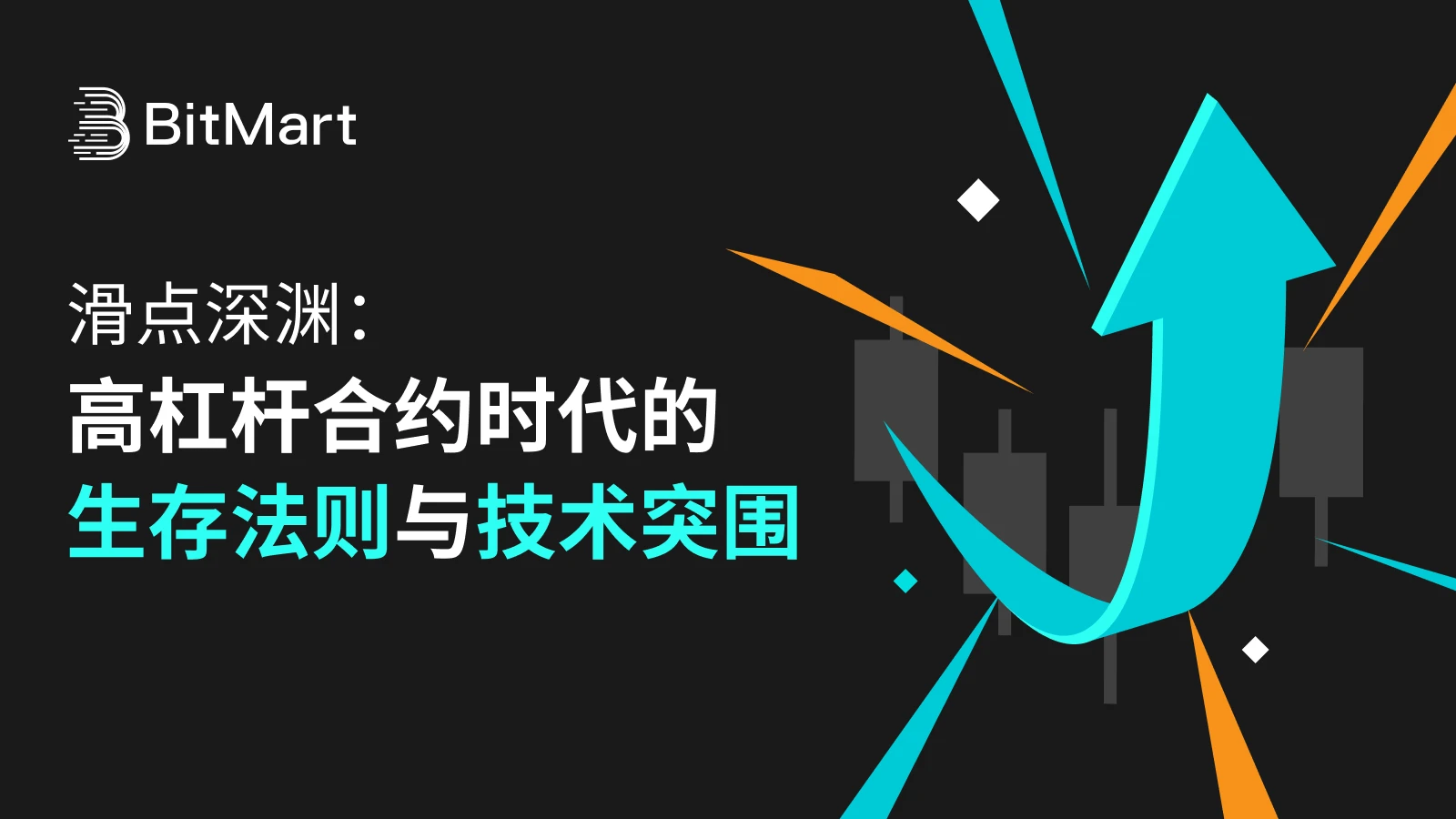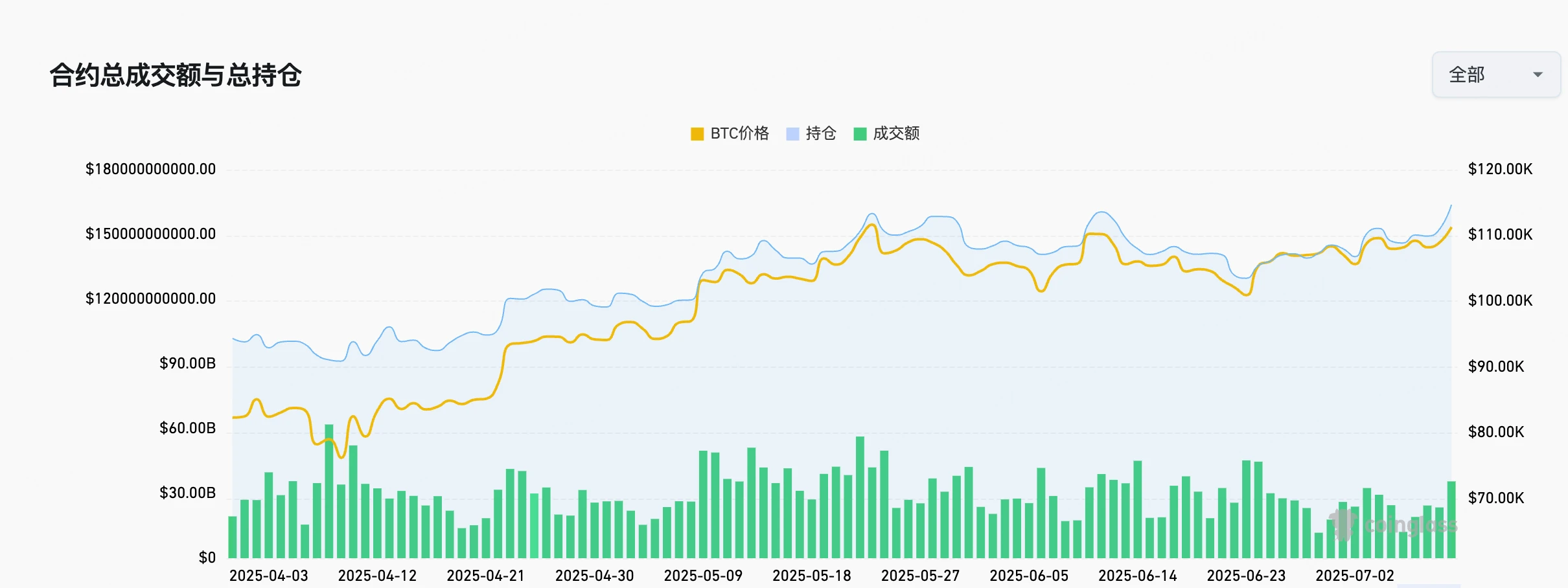
According to BitMart data, BTC has once again broken through its all-time high, with the spot price once reaching $123,215, marking a new investment boom in the crypto market as it continues to heat up. In recent years, with the globalization of cryptocurrency trading and the influx of institutional funds, the contract trading market has ushered in an unprecedented explosive growth. As a market with high leverage and strong volatility, although contract trading provides investors with higher profit potential, it also comes with huge risks. In particular, the problem of slippage has become a pain point that cannot be ignored by many crypto traders. Therefore, how to effectively solve the slippage problem has become the focus of attention in the industry.
The current situation and challenges of contract trading in the crypto market

According to the latest data from Coinglass, in the second quarter of 2025, the contract holdings in the global crypto market rose steadily, with the average daily contract trading volume exceeding US$300 billion for consecutive days, and the highest reaching nearly US$500 billion. This growth trend reflects the continued enthusiasm of market participants for contract trading. However, high volatility and leverage effects have made contract trading not only a tool for investors to pursue high returns, but also a complex game of technology, risk and psychology. For traders, how to accurately grasp market dynamics and avoid potential risks has become the key to success in this uncertain market.
At the same time, the contract market has attracted a large number of new users and has become a hot spot in the eyes of many people. However, as the market expands, the high risk and complexity of contract trading have gradually exposed hidden costs, especially the slippage problem. Slippage not only reduces the efficiency of transaction execution, but also amplifies potential losses in a volatile environment, becoming a fatal problem that new traders cannot ignore.
Slippage: The hidden killer of the crypto market
Slippage refers to the difference between the actual transaction price and the expected price during the order execution process. In the crypto market, slippage is often caused by factors such as market volatility, insufficient liquidity, and technical bottlenecks. Especially when the market fluctuates violently, traders orders often cannot be traded at the expected price, resulting in additional costs, which is undoubtedly a loss for users. Taking the daily trading volume of US$300 billion as an example, if the slippage is 0.001%, the user loss caused by slippage is US$3 million per day.
Specifically, the causes of slippage can be attributed to the following points:
Market volatility: The crypto market is known for its high volatility. When prices fluctuate rapidly, especially when large buy and sell orders occur in a short period of time, the market cannot digest the orders in time, resulting in a gap between the expected price and the actual transaction price.
Insufficient liquidity: Some trading pairs, especially niche currencies or low-volume markets, have poor liquidity, making large orders prone to slippage. This is particularly evident in the crypto market, where liquidity and depth are generally weaker than traditional financial markets.
Technical limitations: The platforms technical architecture, system delays and other factors may also cause slippage. Especially in high-frequency trading and extreme market conditions, the platforms response speed may not be able to keep up with market fluctuations in a timely manner.
For many traders, slippage is not only an increase in transaction costs, but also increases the uncertainty of trading decisions and strategies. When a trader trades large amounts through leverage, slippage may even increase the risk of forced liquidation.
BitMart Slippage Protection Plan Phase II: From Risk Compensation to Ultimate Protection
BitMart is well aware of the importance of slippage to traders, so the second phase of the Slippage Protection Plan has been significantly upgraded on the original basis. This upgrade not only lowers the compensation threshold, but also further improves the controllability and transparency of slippage through innovative technical solutions.
1. The compensation threshold is significantly lowered
One of the biggest highlights of the second phase of the Slippage Protection Plan is the adjustment of the compensation threshold, which requires the slippage to be compressed from the original 0.05% to 0.02%. This improvement allows even tiny slippages to be captured in time and trigger the compensation rules. Taking Bitcoin (BTC) as an example, if the expected transaction price is $100,000 and the actual transaction price is $100,020 (a difference of $20), this small price difference can trigger compensation. This adjustment demonstrates BitMarts confidence in the platforms liquidity and engine stability, and also demonstrates its innovative progress at the technical level.
2. Comprehensive compensation and tiered incentives
The second phase of the Slippage Protection Plan not only significantly expands the scope of compensation, from a single margin slippage loss to compensation for full-position slippage losses, ensuring that users can get full protection even in large transactions. At the same time, new users can also enjoy the 200% difference refund discount for abnormal slippage when they register and trade for the first time (up to 2,000 USDT per transaction). In addition, BitMart also provides users holding BMX tokens with an additional 10% compensation benefit and priority review channel, further enhancing the platforms user stickiness and increasing the holding value of BMX.
3. Currency expansion and rapid compensation
In order to better meet user needs, the second phase of the Slippage Protection Program will expand the range of supported currencies from the initial BTC and ETH to 8 major mainstream currencies including SOL, XRP, BNB, TRX, DOGE and ADA, covering a wider range of market needs. At the same time, BitMart promises that after the review is passed, the users compensation will be extremely fast, ensuring that users can receive compensation in time in any market environment, and enhancing the users sense of trust and security in trading.
The second phase of the Slippage Protection Plan launched by BitMart undoubtedly provides certain protection for traders, especially in terms of improving transaction transparency and controllability. By lowering the compensation threshold, expanding the compensation scope and introducing more efficient liquidity matching, the platform not only enhances user trust, but also attracts more high-frequency traders and large capital users. However, despite technological breakthroughs, extreme market conditions and trading pairs with poor liquidity may still lead to slippage, which undoubtedly puts higher demands on the platforms compensation mechanism.
In the future, BitMart seems to be interested in continuing to optimize this mechanism to adapt to changes in market demand. By combining cutting-edge technologies such as quantitative trading and artificial intelligence, the platform is expected to make further progress in improving the accuracy of slippage prevention and personalized services. If this trend continues, BitMart may further consolidate its market position in the highly competitive crypto trading market.
Summarize
In fact, the slippage problem has always been an unavoidable challenge in contract trading in the crypto market, especially in an environment of high volatility and insufficient liquidity. Slippage not only increases transaction costs, but may also directly affect the success of trading strategies. With the continuous expansion of the market scale and the injection of institutional funds, how to effectively control slippage and improve transaction efficiency has become a core issue that crypto trading platforms must face.
At present, as BTC breaks new highs, the activity of the crypto market has risen again, which also means that trading volume and market volatility will further intensify. In this environment, the platforms technical architecture and risk management capabilities will directly determine whether it can provide users with a more stable and secure trading experience. In addition to slippage control, the future focus of the industry will be on how to use technologies such as quantitative trading and artificial intelligence to improve transaction accuracy, ensure stable execution under extreme market conditions, and promote the entire crypto industry towards a more mature and standardized future.










